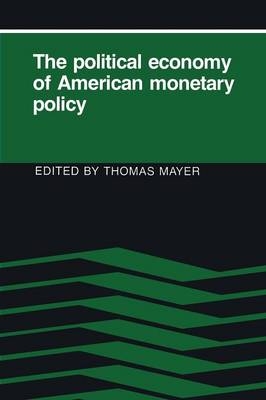
The Political Economy of American Monetary Policy
Cambridge University Press (Verlag)
978-0-521-44651-8 (ISBN)
This collection of essays examines the institutional framework in which monetary policy is made. The essays consider two questions: how free is the Fed to set monetary policy and to what extent do organisational problems affect the choice of that monetary policy? Topics covered include the Fed's response to movements on its goals, Congressional and presidential pressures on the Fed, the existence of political business cycles operating through monetary policy, and the extent to which monetary policy may be explained by the Fed's own interests. A final section examines the claim that the Federal Reserve follows counter-cyclical policy and evaluates its performance as a lender to banks both in normal times and as a lender of last resort.
Preface; 1. Introduction Thomas Mayer; 2. Studying the Fed: towards a broader public choice perspective Thomas Willett; 3. The Federal Reserve reaction function: a specification search Salwa Khouri; 4. Corporate profitability as a determinant of restrictive monetary policy: estimates for the post-war United States Gerald Epstein and Juliet Schor; 5. Federal reserve behavior since 1980: a financial market perspective William Melton and V. Vance Roley; 6. The Federal Reserve and its institutional environment: a review Michael Munger and Brian Roberts; 7. The political economy of monetary policy Robert Hetzel; 8. Political monetary cycles Nathaniel Beck; 9. Congress and the Fed: Why the dog does not bark in the night Nathaniel Beck; 10. The Federal Reserve as a political power James Pierce; 11. Monetary policy and political economy: the Federal Reserve and the Bank of Japan Thomas Cargill and Michael Hutchinson; 12. A positive analysis of the policymaking process at the Federal Reserve Raymond Lombra and Nicholas Karamouzis; 13. A theory of FOMC dissent voting with evidence from the time series Thomas Havrilesky and Robert Schweitzer; 14. Explaining FOMC members' votes John Gildea; 15. Fed behaviour and X-efficiency theory: toward a general framework Harinder Singh and Roger Frantz; 16. Minimizing regret: cognitive dissonance as an explanation of FOMC behavior Thomas Mayer; 17. The discount window William Poole; 18. Leaning against the wind: the behavior of the money stock in recession and recovery, 1953–8 Elmus Wicker; 19. Bureaucratic self-interest as an obstacle to monetary reform Edward Kane; Index.
| Erscheint lt. Verlag | 29.1.1993 |
|---|---|
| Zusatzinfo | 30 Tables, unspecified; 4 Line drawings, unspecified |
| Verlagsort | Cambridge |
| Sprache | englisch |
| Maße | 151 x 227 mm |
| Gewicht | 445 g |
| Themenwelt | Wirtschaft ► Betriebswirtschaft / Management ► Finanzierung |
| Betriebswirtschaft / Management ► Spezielle Betriebswirtschaftslehre ► Bankbetriebslehre | |
| Wirtschaft ► Volkswirtschaftslehre ► Makroökonomie | |
| ISBN-10 | 0-521-44651-1 / 0521446511 |
| ISBN-13 | 978-0-521-44651-8 / 9780521446518 |
| Zustand | Neuware |
| Haben Sie eine Frage zum Produkt? |
aus dem Bereich


